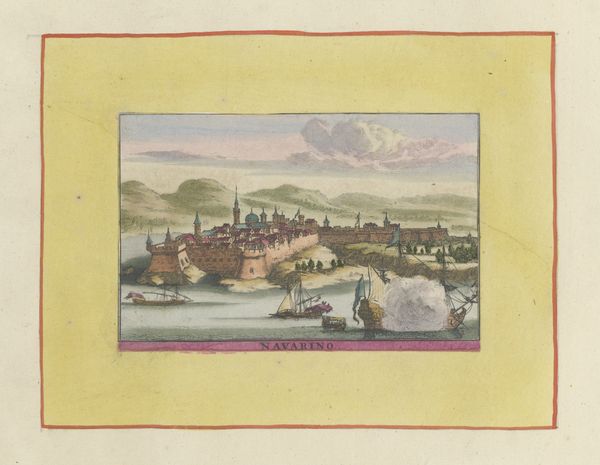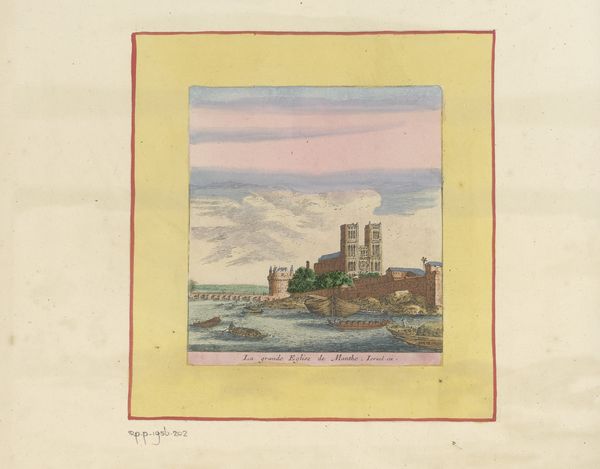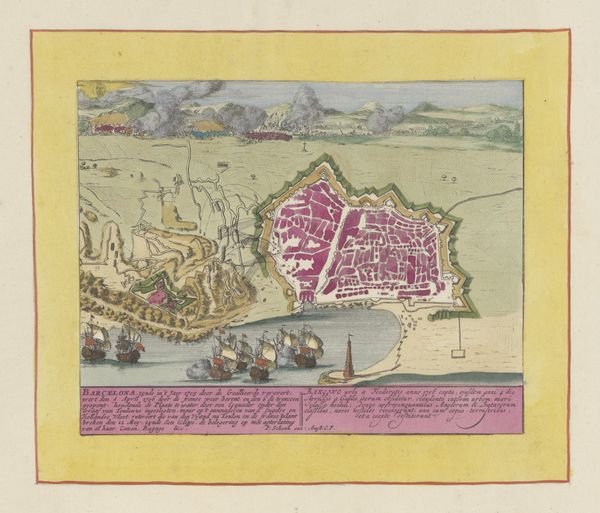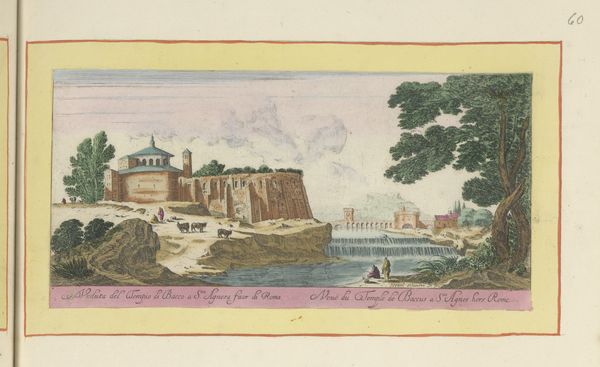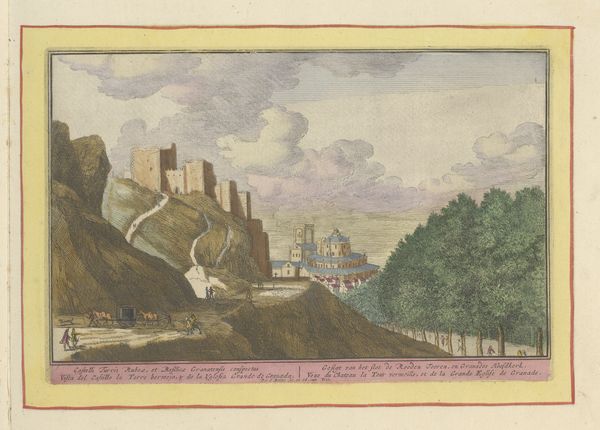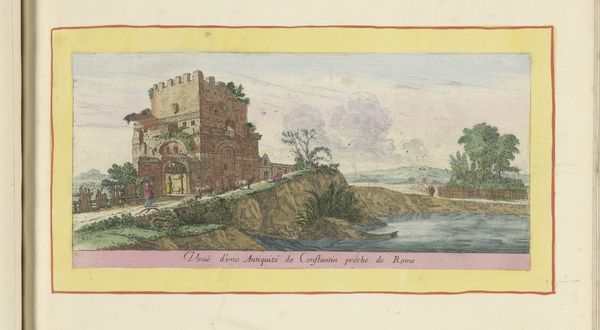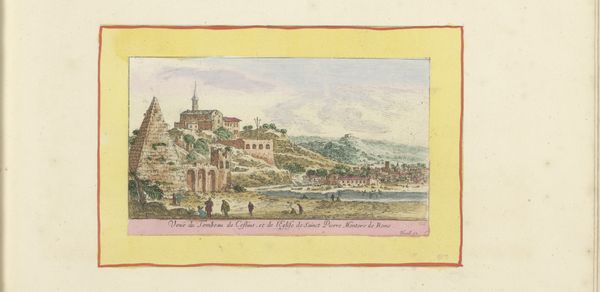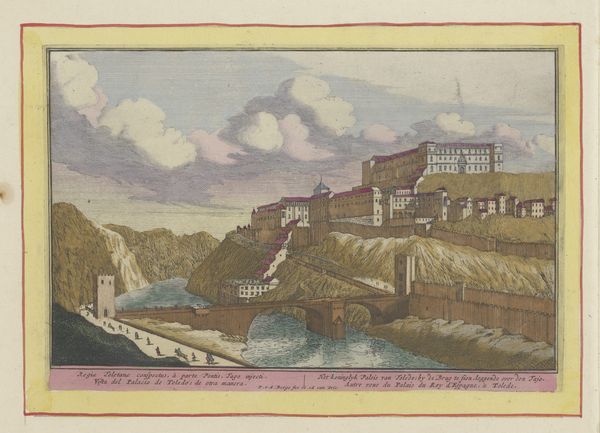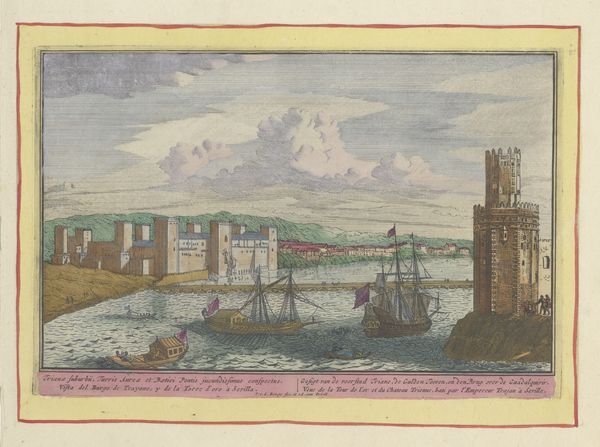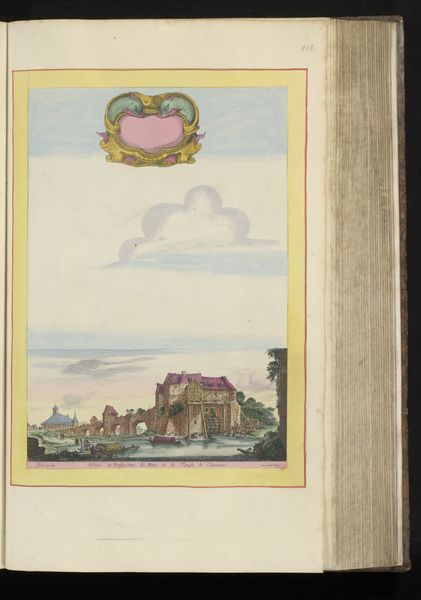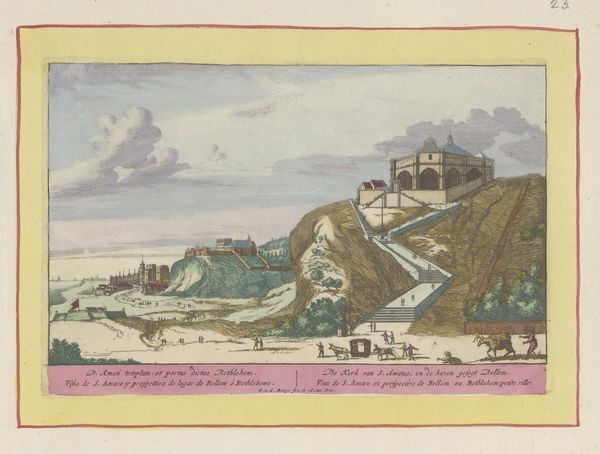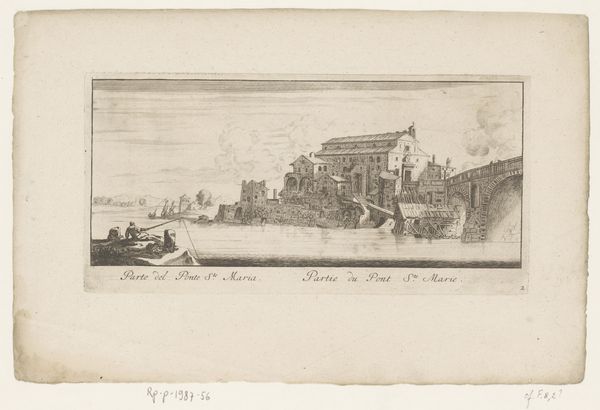
drawing, print, etching, intaglio, paper, ink
#
drawing
#
baroque
# print
#
etching
#
intaglio
#
landscape
#
paper
#
ink
#
coloured pencil
#
cityscape
#
watercolor
Dimensions: height 106 mm, width 249 mm
Copyright: Rijks Museum: Open Domain
Editor: This etching and ink drawing on paper is called "Ponte Rotto te Rome," made sometime between 1631 and 1717 by Israel Silvestre. It’s housed here at the Rijksmuseum. I'm struck by the contrasts: ruin and activity. There's a fisherman calmly casting his line even as the bridge is clearly damaged. What stands out to you? Curator: The ruined bridge, or Ponte Rotto, is not merely a depiction of physical decay; it’s a powerful emblem. Notice how Silvestre hasn't shied away from representing its fragmented form. Consider the symbolism of bridges: connection, passage, transition. What happens when that bridge is broken? Editor: I guess it represents a disruption, or maybe the transience of things? Curator: Precisely! The image operates almost like a *memento mori*, reminding us of the ephemeral nature of human endeavor against the relentless march of time. Even in ruin, there’s resilience – life persists. That fisherman, almost dwarfed by the scene, represents the enduring spirit of humanity. Editor: That’s a really interesting perspective. So the artist is using the broken bridge as a symbol not just of what's lost, but also of what remains. Are there any other symbols in the picture? Curator: Look at the water. Water often symbolizes change, purification, but also potential chaos. The bridge, now broken, is literally giving way to this fluidity. Do you see the other structures, like that church with a cross atop the broken bridge? Editor: I do, now. I guess those mean it's rebuilding. Curator: Consider the cross, against the broken-ness around it: What does that say about that resilience in terms of human and divine actions, maybe both are represented in Silvestre’s world. Editor: That's given me a whole new appreciation for this work! It’s far more than just a pretty picture of a broken bridge. Curator: Exactly! It's a rich tapestry of symbols, reflecting on themes of time, loss, and the enduring spirit. These aren't just lines on paper; they are echoes of cultural memory.
Comments
No comments
Be the first to comment and join the conversation on the ultimate creative platform.
